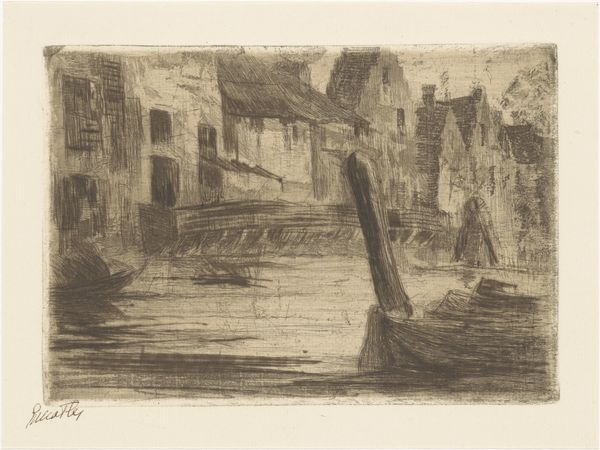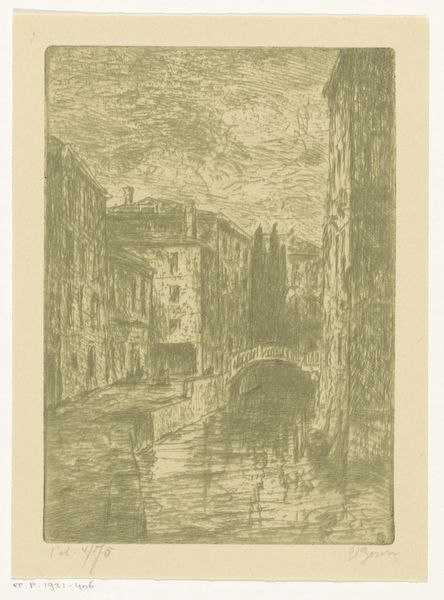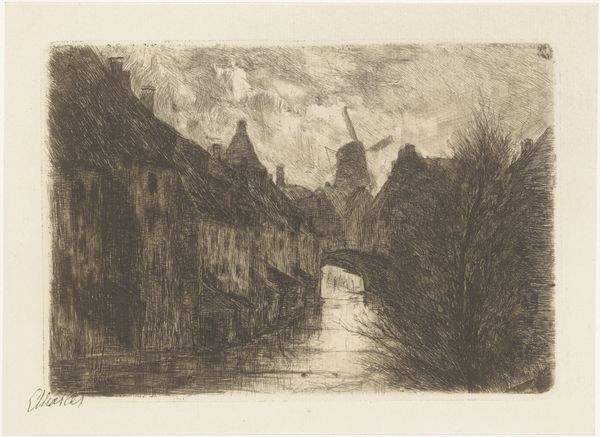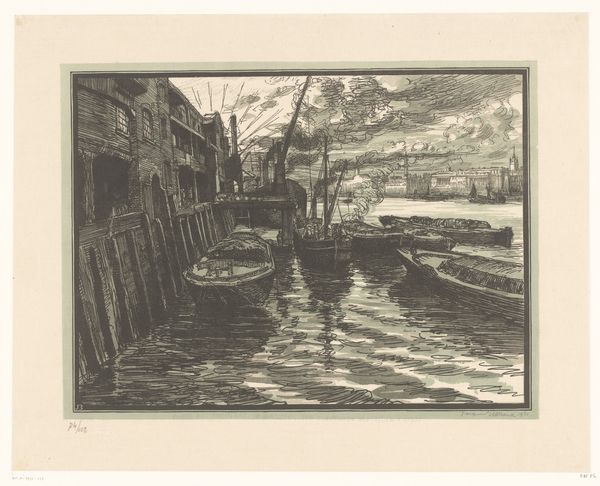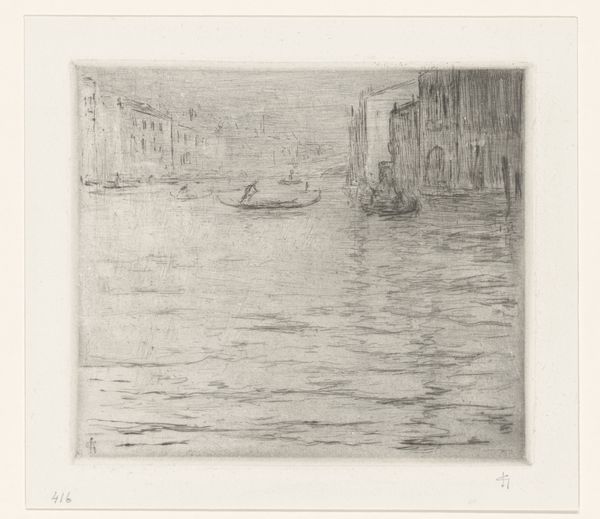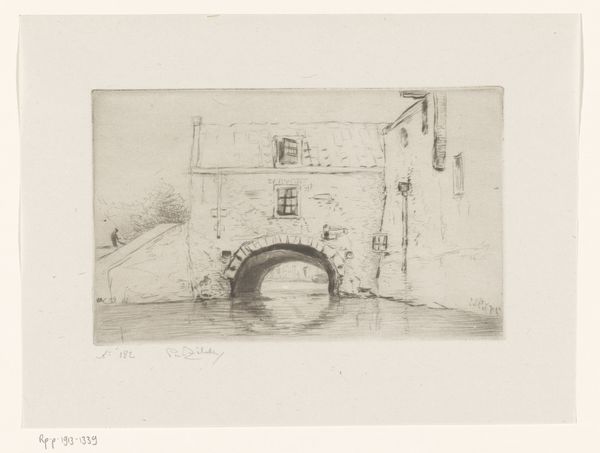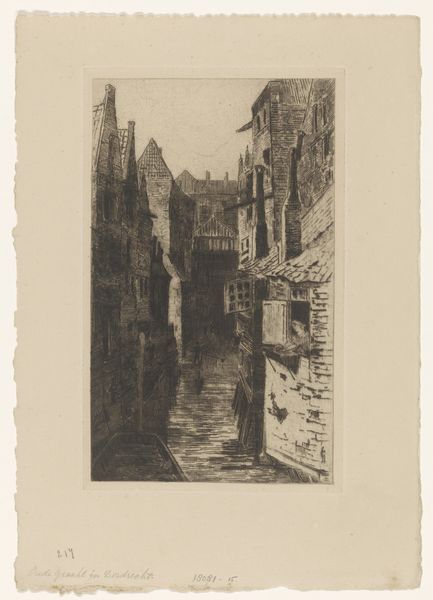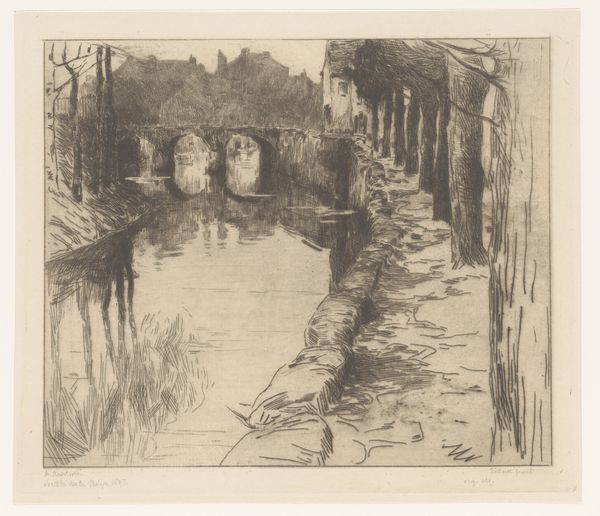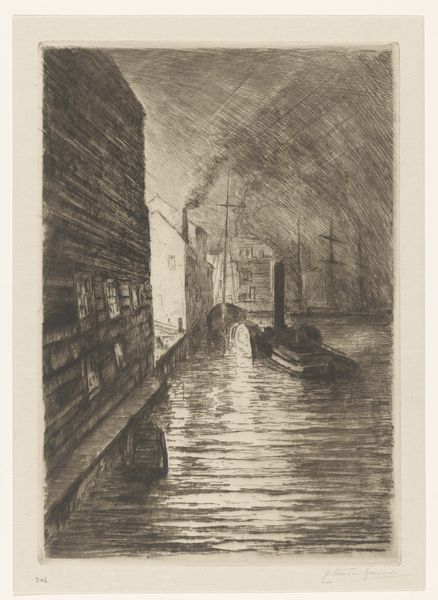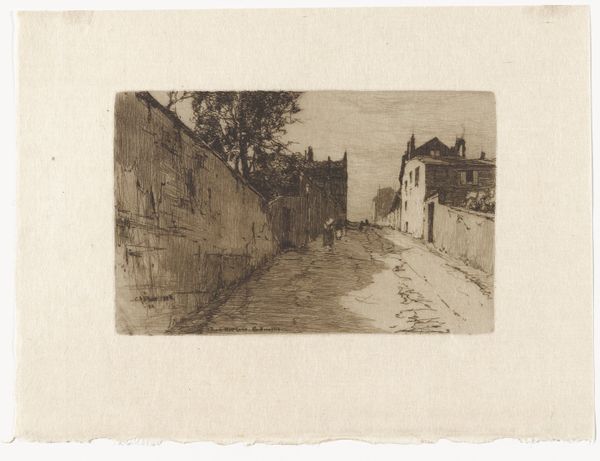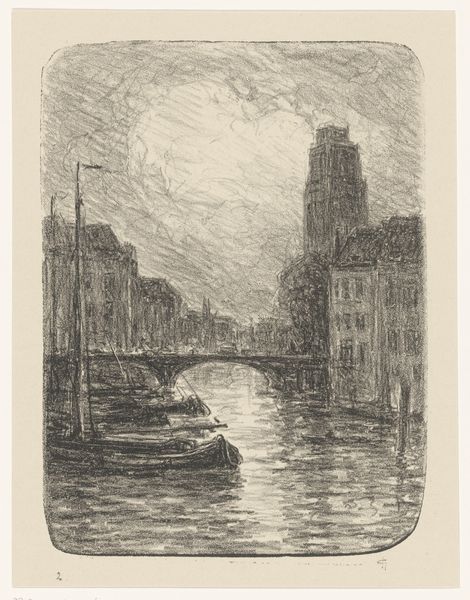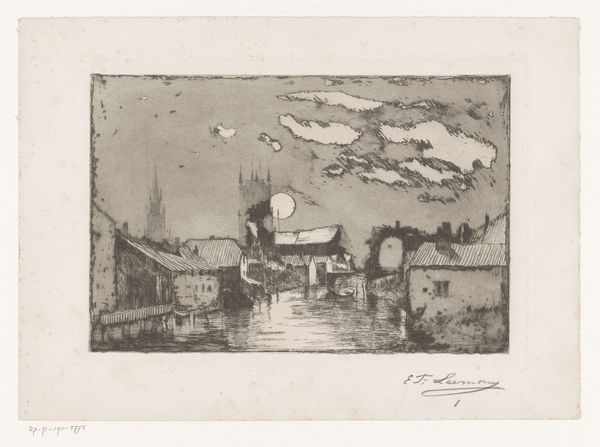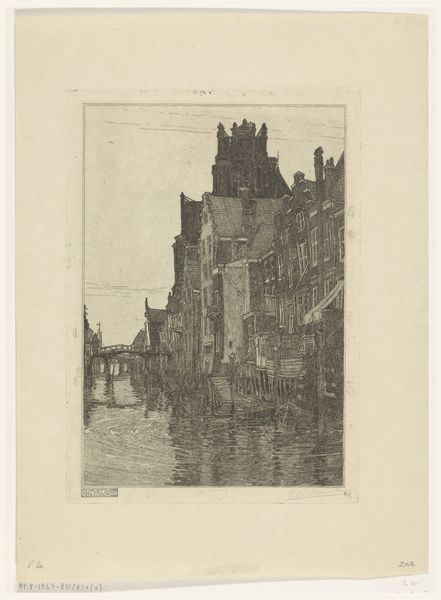
etching
#
dutch-golden-age
#
etching
#
landscape
#
etching
#
cityscape
#
realism
Dimensions: height 120 mm, width 160 mm
Copyright: Rijks Museum: Open Domain
Editor: We're looking at "Gracht in Dordrecht bij avond," an etching by Carel Nicolaas Storm van 's-Gravesande, made sometime between 1889 and 1902. It’s held at the Rijksmuseum. I find the piece quite somber. The texture seems almost oppressive, despite the delicate lines of the etching. What stands out to you when you examine it? Curator: What captures my immediate attention is the tonal range achieved within the limitations of etching. Notice the careful distribution of light and shadow to construct space, particularly in the water. How would you describe the rhythm created by the vertical lines composing the buildings and their reflections? Editor: The reflections in the water do break up the strict verticals, softening the overall rigid feel. They offer an almost ethereal counterpoint to the density of the buildings themselves. Curator: Precisely. Consider then the semiotic function of line in this image. The deliberate choice to employ straight, unwavering lines for the architecture, versus the broken, flickering lines depicting the water and sky, speaks to a tension between the enduring structure of human creation and the ever-changing natural world. Do you see the composition as balanced? Editor: I'm not sure it is. The left side feels much heavier than the right, which creates a sense of imbalance that makes the scene unsettling. Is this intentional, or is there something else at play in the composition? Curator: Perhaps it mirrors the imbalance of the era—rapid industrialization set against the enduring tranquility of Dutch city life. Regardless, observe the effect of this asymmetry on the viewer’s emotional engagement with the work. Editor: I see your point. Paying close attention to those contrasts helps unlock further potential interpretations. Thank you! Curator: My pleasure. Appreciating these elements in the artistic technique truly alters one's initial reaction to the etching.
Comments
No comments
Be the first to comment and join the conversation on the ultimate creative platform.
